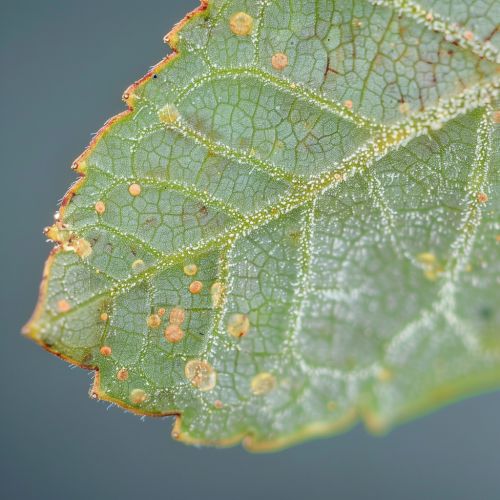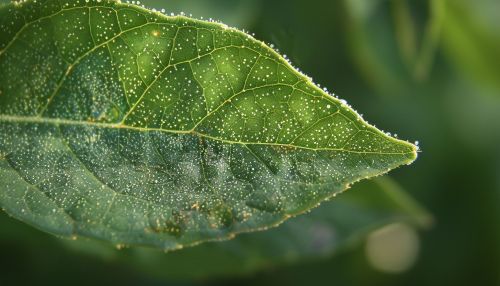Foliar Endophytes
Introduction
Foliar endophytes are microorganisms, primarily fungi and bacteria, that live within the tissues of plants without causing apparent harm to their host. These endophytes are found in the leaves (foliage) of plants and have been a subject of increasing scientific interest due to their potential roles in plant health, growth, and resistance to environmental stressors.
Types of Foliar Endophytes
Foliar endophytes can be broadly classified into fungal and bacterial endophytes. Each type has distinct characteristics and interactions with their host plants.
Fungal Endophytes
Fungal endophytes are the most commonly studied group of foliar endophytes. They belong to various taxonomic groups, including Ascomycota, Basidiomycota, and Zygomycota. These fungi can form mutualistic relationships with their host plants, providing benefits such as enhanced growth, increased resistance to pathogens, and improved tolerance to abiotic stresses like drought and salinity.
Bacterial Endophytes
Bacterial endophytes are less studied compared to their fungal counterparts but are equally important. They belong to diverse genera, including Pseudomonas, Bacillus, and Enterobacter. Bacterial endophytes can promote plant growth by producing phytohormones, fixing nitrogen, and solubilizing phosphorus. They also play a role in protecting plants from pathogens through the production of antimicrobial compounds.


Mechanisms of Colonization
Foliar endophytes colonize plant tissues through various mechanisms. These include direct penetration through stomata, wounds, or natural openings, as well as systemic movement from other parts of the plant.
Entry Through Stomata
Stomata are small openings on the leaf surface that allow gas exchange. Many foliar endophytes enter the leaf tissues through these openings. This mode of entry is particularly common for fungal endophytes.
Wound Entry
Wounds caused by herbivores, mechanical damage, or environmental factors can serve as entry points for endophytes. Once inside, these microorganisms can spread throughout the leaf tissues.
Systemic Movement
Some endophytes can move systemically within the plant, colonizing leaves from other infected parts such as roots or stems. This movement can occur through the plant's vascular system, allowing endophytes to reach distant tissues.
Ecological Roles
Foliar endophytes play several crucial ecological roles that benefit their host plants and the surrounding environment.
Plant Growth Promotion
Endophytes can enhance plant growth by producing phytohormones such as auxins, cytokinins, and gibberellins. These hormones regulate various aspects of plant development, including cell division, elongation, and differentiation.
Disease Resistance
Endophytes can protect plants from pathogens through various mechanisms. They can produce antimicrobial compounds that inhibit pathogen growth, compete with pathogens for nutrients and space, and induce systemic resistance in the host plant.
Stress Tolerance
Endophytes can help plants tolerate abiotic stresses such as drought, salinity, and heavy metal toxicity. They achieve this by producing stress-related proteins, enhancing antioxidant activity, and modulating the plant's stress response pathways.
Applications in Agriculture
The potential applications of foliar endophytes in agriculture are vast. They can be used as biocontrol agents, biofertilizers, and stress protectants to improve crop yield and sustainability.
Biocontrol Agents
Foliar endophytes can be used to control plant diseases by inhibiting pathogen growth and inducing resistance in the host plant. This approach reduces the need for chemical pesticides, promoting environmentally friendly farming practices.
Biofertilizers
Endophytes can enhance nutrient availability and uptake in plants. For example, nitrogen-fixing bacterial endophytes can provide a natural source of nitrogen, reducing the need for synthetic fertilizers.
Stress Protectants
Endophytes can be used to improve plant tolerance to environmental stresses. This is particularly important in the context of climate change, where crops are increasingly exposed to extreme weather conditions.
Research and Future Directions
Research on foliar endophytes is ongoing, with several promising areas of investigation.
Genomics and Metabolomics
Advances in genomics and metabolomics are providing new insights into the diversity and functions of foliar endophytes. These technologies allow researchers to identify endophyte species, understand their metabolic capabilities, and elucidate their interactions with host plants.
Endophyte-Host Interactions
Understanding the molecular mechanisms underlying endophyte-host interactions is crucial for harnessing their potential benefits. This includes studying how endophytes colonize plant tissues, modulate plant physiology, and respond to environmental cues.
Application Development
Developing practical applications for foliar endophytes in agriculture requires multidisciplinary approaches. This includes optimizing endophyte inoculation methods, ensuring their stability and efficacy in field conditions, and assessing their long-term impacts on plant health and productivity.
